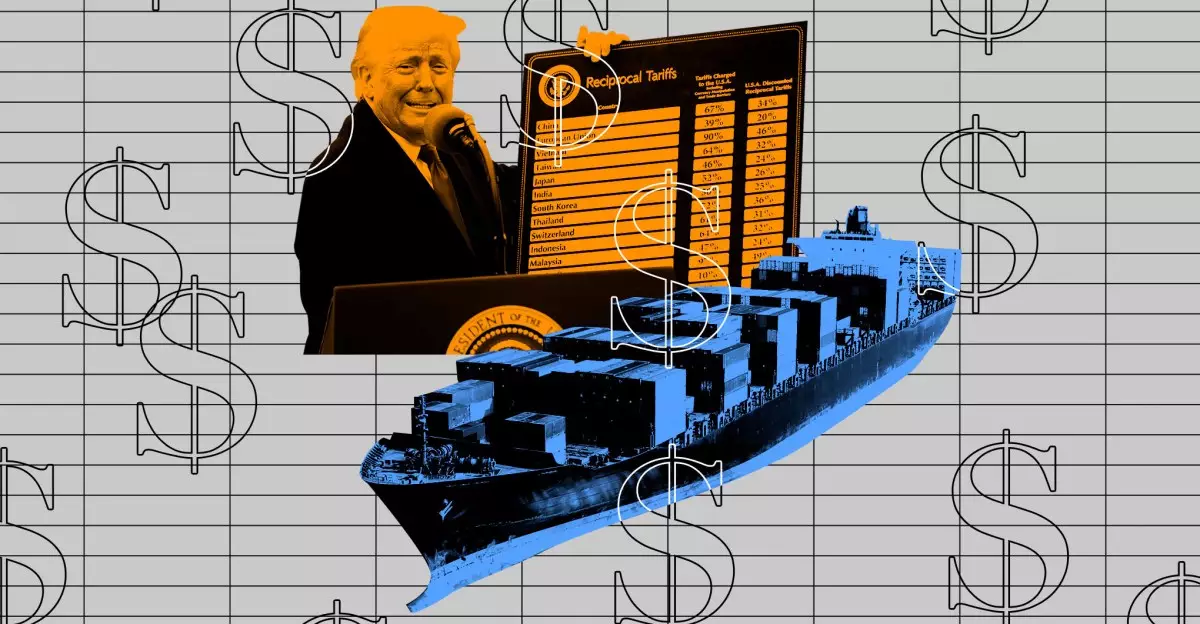In a noteworthy development within the realm of global trade and consumer technology, the US Customs and Border Protection (CBP) has amended its stance on tariffs concerning electronics, particularly those sourced from China. The recent guidance, prompted by the Trump administration’s trade strategy, introduces a crucial exemption for essential consumer technologies, such as smartphones, laptops, and computer components. While these exemptions appear to alleviate the burden of looming tariffs, they are inherently complex and layered, suggesting a nuanced landscape for both consumers and manufacturers alike.
Such exemptions indicate a strategic pivot, likely aimed at mitigating backlash from consumers who have begun to feel the financial pressures of escalating prices associated with international tariffs. However, it’s imperative to recognize that not all tariffs have been eliminated; many products remain saddled with pre-existing duties that could still affect pricing and availability, leaving a portion of the tech market in a precarious position. For manufacturers like Apple and Sony, the intricate tariff structure may lead to increased costs in production and distribution—an outcome that could ultimately trickle down to consumers.
Impact on American Consumers and Businesses
This new guidance from the CBP arrives at a time of rising tension and uncertainty within the tech landscape. With many companies already grappling with inflated prices due to previous tariff implementations, the potential for increased consumer costs remains a significant concern. While the exclusion of certain tech imports may alleviate some immediate financial strain, the reality is that not all products are equally treated under these new regulations.
For instance, companies such as OnePlus and Sony have already adjusted their pricing strategies, hinting at the incremental impacts these tariffs have on consumer goods. This adjustment exposes consumers to the chilling reality of inflated costs, which could diminish overall product accessibility, particularly for high-end technology items that are often considered luxuries in financially strained households.
Moreover, the complications do not end there. The increase in tariffs for Chinese goods—from a staggering 125 percent for some items up to a startling 145 percent—invites skepticism from both consumers and businesses. These shifts often prompt companies to either pass on costs to the consumer or, conversely, limit availability and product launches in the market.
The Strategic Moves by Major Players
In this climate of uncertainty, major tech firms are navigating through the tangled web of tariffs with varying degrees of caution. For example, Nintendo’s delay of US preorders for the highly anticipated Switch 2 reflects a corporate strategy that prioritizes long-term stability over immediate sales figures. Meanwhile, Apple’s proactive importation of 600 tons of iPhones from India signals a desire to circumvent tariff implications and ensure a competitive pricing strategy upon launch.
Such decisions showcase a broader trend among tech companies to bolster supply chains and diversify manufacturing locations away from China. This could have lasting implications for the global tech industry, pushing it towards innovation in logistics and supply chain management, while also raising the stakes for companies that remain tethered to volatile supplier relationships.
Long-Term Implications for Trade Relations
As the US navigates complex trade relationships, especially regarding China, the ramifications of these tariff exemptions extend beyond immediate consumer impact. The potential for retaliatory trade measures by China looms, threatening to escalate tensions and further complicate an already intricate trade network. This situation raises questions about sustainability as industries worldwide grapple with fluctuating tariffs and changing policies.
Ultimately, this dynamic underscores the importance of adapting to evolving trade relations and the need for transparency in pricing strategies. As consumers, staying informed about these changes empowers us to make educated purchasing decisions, potentially influencing the market’s direction as we collectively navigate pricing shifts and product availability in the tech space.
In the grand scheme of international commerce, the current tariff strategies present both challenges and opportunities—an intricate dance that will shape the future of consumer tech for years to come.

